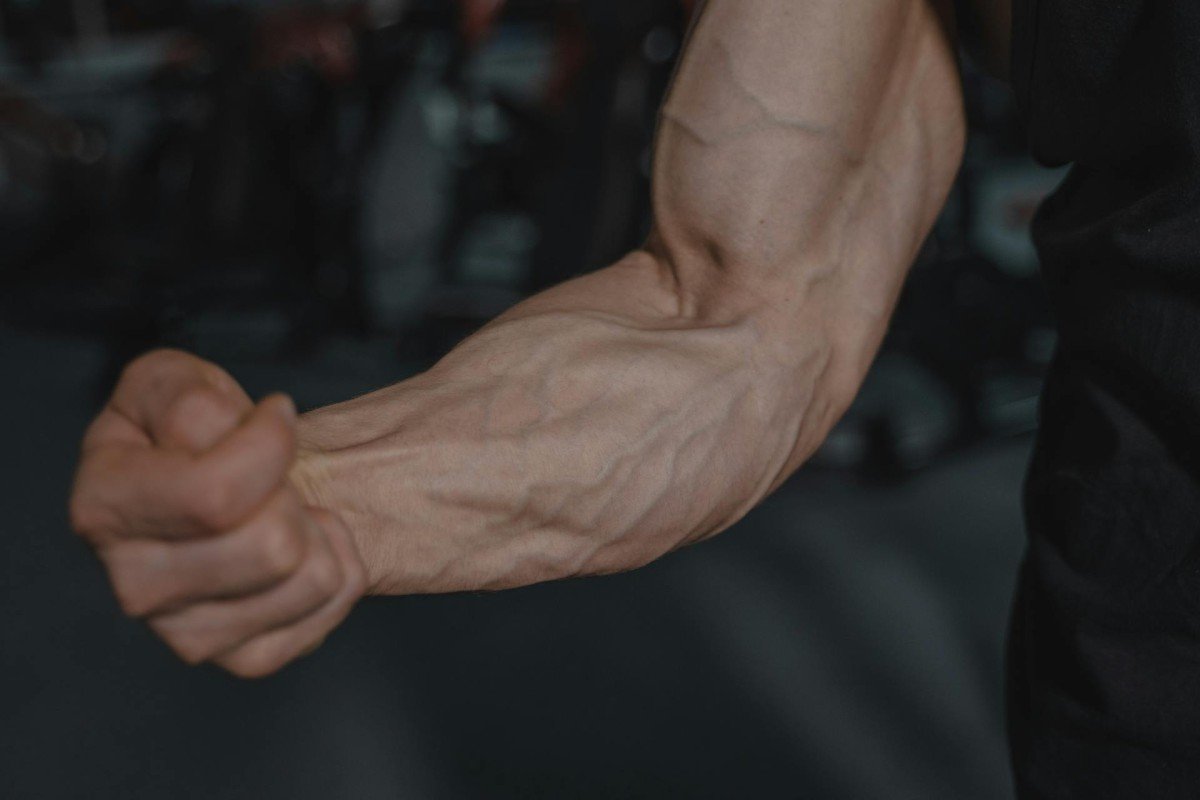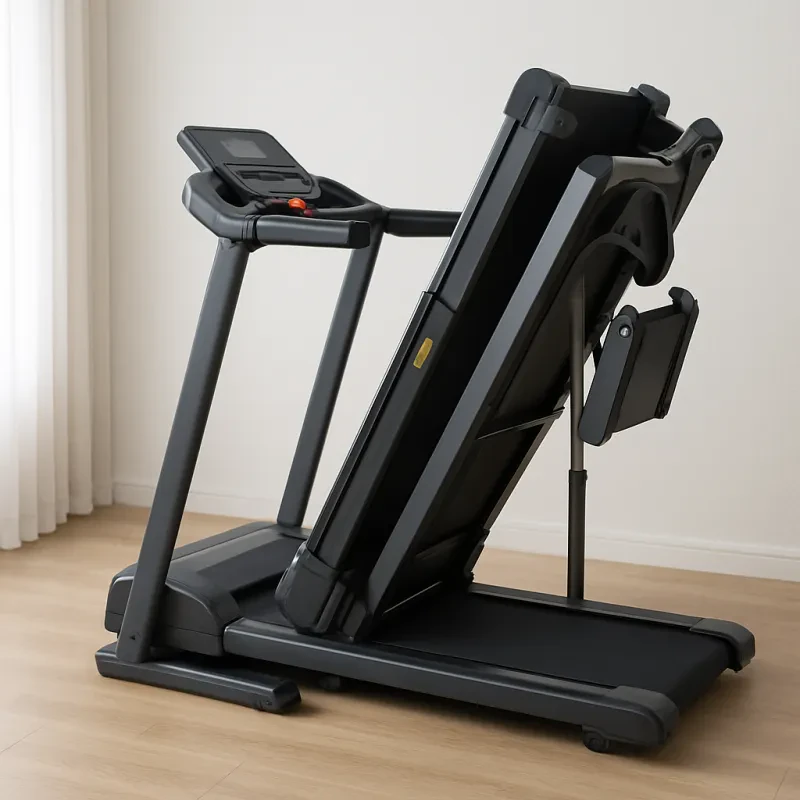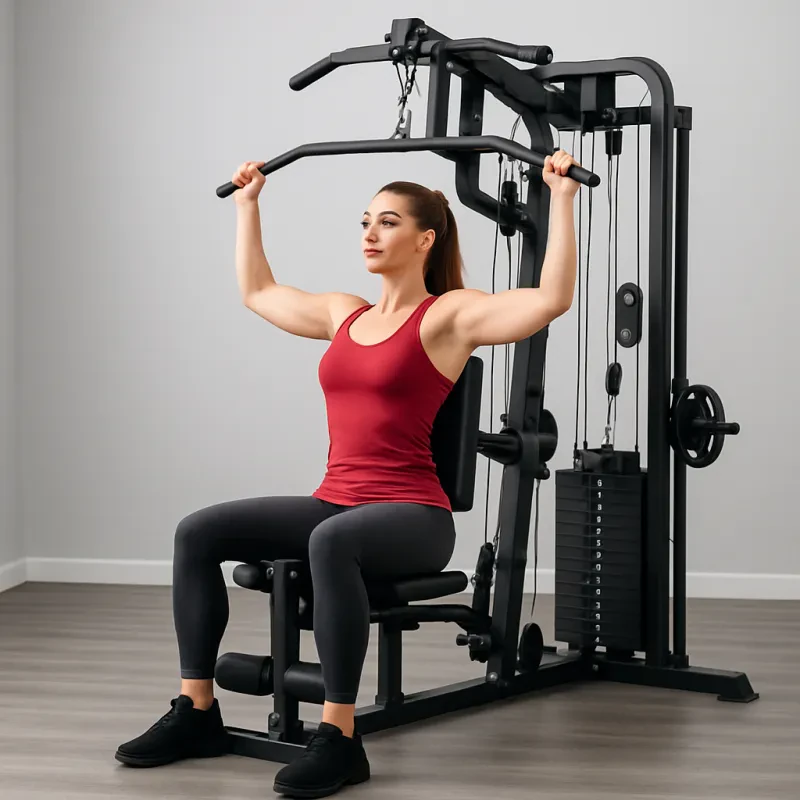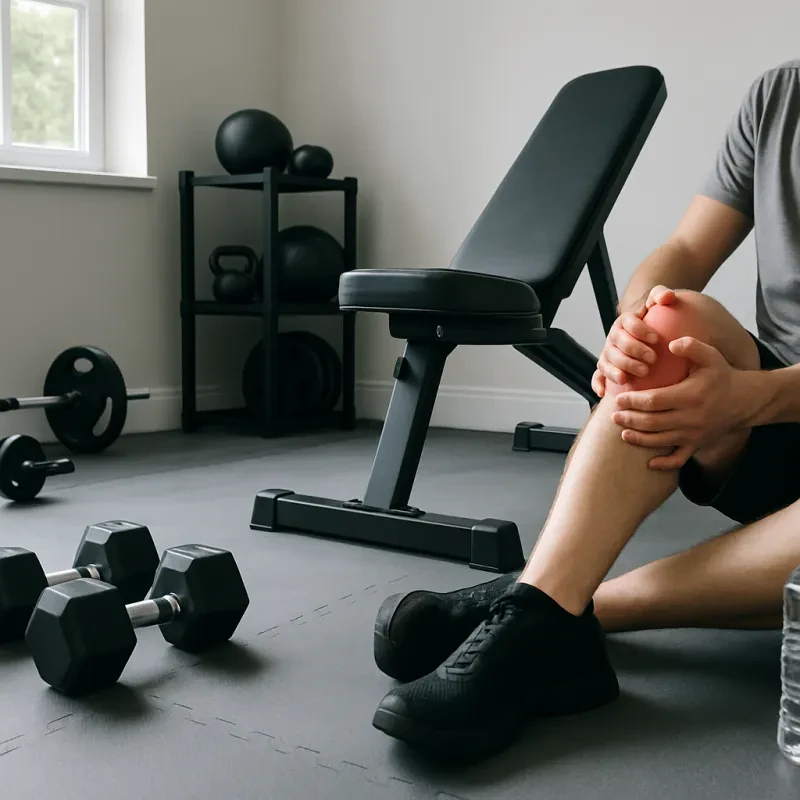🩸 What Is Vascularity, And Why Does It Matter?
When you see lean, ripped physiques with pronounced veins popping across the arms and shoulders, you're looking at vascularity, a visible sign of low body fat, muscular development, and good blood flow.
But vascularity isn’t just about looks. It reflects your body’s ability to pump blood efficiently, remove waste, and deliver oxygen to working muscles. Enhancing vascularity can improve endurance, muscle pumps, and overall athletic performance.
Ready to show more definition and feel stronger from the inside out? Here are science-backed strategies to safely and naturally enhance vascularity.
🔬 The Science Behind Vascularity
Muscle vascularity is influenced by three main factors:
-
Body Fat Percentage – Lower body fat allows veins to become more visible.
-
Muscle Mass – More muscle = more blood flow and vascular pressure.
-
Blood Flow & Circulation – Good hydration and nitric oxide levels widen veins and capillaries.
Let’s break down exactly what you can do to improve all three.
🍽️ 1. Lower Your Body Fat With Smart Nutrition
“You can't out-train a bad diet.”
Vascularity improves significantly as your body fat drops under 12-15% for men and 18-22% for women.
✅ How to Eat for Vascularity:
-
🥗 Prioritize lean proteins (chicken, turkey, tofu, eggs)
-
🥑 Include healthy fats (avocado, olive oil, nuts)
-
🥦 Load up on fiber-rich vegetables to control hunger
-
🚰 Stay hydrated to avoid water retention
❌ Limit:
-
Processed carbs and sugars
-
Sodium-heavy foods (which cause bloating and water retention)
💡 Pro Tip: Maintain a small caloric deficit (200-500 kcal/day) to lose fat without losing muscle.
🏋️ 2. Build More Muscle With Resistance Training
More muscle = more vascular surface.
Lifting weights increases blood vessel density and capillary growth, both of which boost vascularity. Bigger muscles also push veins closer to the skin, making them more visible.
💪 Try These Muscle-Building Moves:
-
Barbell Squats
-
Deadlifts
-
Bench Press
-
Pull-Ups
-
Shoulder Press
-
Arm Curls + Tricep Dips
🏋️ Aim for compound lifts 3-4 days a week, and train to failure occasionally to maximize hypertrophy.
💥 3. Add High-Rep Finisher Sets
Chase that pump.
High-rep sets increase blood flow, pump up your muscles, and stretch your vascular system.
🔁 Example:
-
3 sets of 15-20 reps of:
-
Bicep curls
-
Push-ups
-
Leg extensions
-
Lateral raises
-
💣 Combine with short rest periods (30-45 seconds) to enhance the pump.
🧃 4. Optimize Hydration & Sodium Balance
Hydration helps the vascular magic happen.
Proper water intake keeps blood volume high, improves nutrient delivery, and reduces subcutaneous water retention.
💧 Hydration Checklist:
-
💦 Drink at least 3 liters (100 oz) per day
-
🧂 Balance sodium and potassium intake
-
🍌 Eat potassium-rich foods (bananas, spinach, sweet potatoes)
⚠️ Dehydration can cause veins to appear “flat” or less pronounced, even with low body fat.
🧬 5. Boost Nitric Oxide Naturally
Better blood flow = better vascularity.
Nitric oxide (NO) widens blood vessels, increasing blood flow and making veins pop.
🍓 Eat These NO-Boosting Foods:
-
Beets 🥬
-
Watermelon 🍉
-
Dark leafy greens 🥗
-
Pomegranate juice 🍷
-
Garlic 🧄
⚡ Try Supplements (Optional):
-
L-citrulline
-
Beetroot extract
-
L-arginine
-
Nitrosigine
🕓 Take 30–45 mins before your workout for best results.
🏃 6. Incorporate Steady-State & HIIT Cardio
Cardio helps burn fat, but don’t overdo it.
🔄 Combine:
-
🏃 HIIT (High Intensity Interval Training) – 2x/week
-
🚶 Steady-state walking (10,000 steps/day or incline walking) – 3x/week
💡 HIIT improves blood vessel elasticity, boosts metabolism, and preserves muscle.
🌞 7. Get Outdoors (Vitamin D Matters!)
Low vitamin D is linked to poor circulation and reduced nitric oxide levels.
☀️ Try:
-
Morning walks
-
Outdoor training sessions
-
15–20 minutes of daily sun exposure
🧴 Don’t forget your SPF to protect your skin while you show off those veins!
🧘 8. Reduce Stress and Get More Sleep
High cortisol = bloating, fat retention, and slower recovery.
A calm, well-rested body circulates blood more efficiently and stores less stubborn fat, especially around the midsection.
😴 How To Improve Recovery:
-
🛌 Get 7-9 hours of sleep
-
🧘♂️ Add breathing exercises, meditation, or stretching
-
📵 Cut screen time before bed for deeper rest
🧠 A relaxed nervous system helps veins stay open and responsive.
📋 Weekly Vascularity Training Plan (Sample)
| Day | Focus | Workout Type |
|---|---|---|
| Monday | Upper Body Strength | Compound + Isolation |
| Tuesday | Cardio + Core | HIIT + Abs |
| Wednesday | Active Recovery | Mobility + Walk |
| Thursday | Lower Body Strength | Squats, Deadlifts |
| Friday | Full Body + Pump Finish | High-Rep Sets |
| Saturday | Outdoor Walk or Hike | Cardio + Vitamin D |
| Sunday | Rest or Stretch | Sleep & Hydration |
🛍️ Gear & Tools to Boost Your Progress
| Item | Purpose |
|---|---|
| Resistance Bands 🔁 | High-rep workouts and finishers |
| L-Citrulline Powder 🧪 | Pre-workout nitric oxide boost |
| Foam Roller 🔄 | Improve circulation and recovery |
| Fitness Tracker ⌚ | Monitor heart rate and cardio goals |
| Shaker Bottle 💧 | Stay hydrated all day long |
🎯 Vascularity is Earned, Not Gifted
Want veins that pop and muscles that look carved? It takes consistency, smart training, proper nutrition, and patience.
You don’t need shortcuts or extreme diets, just a sustainable plan that helps you build muscle, shed fat, and train with purpose.
💥 “You’re one good workout, one smart meal, and one recovery day away from showing the work you’ve put in.”
Train hard. Recover smart. Eat clean. The vascular look you want? It’s closer than you think.
❓ Frequently Asked Questions About Improving Muscle Vascularity
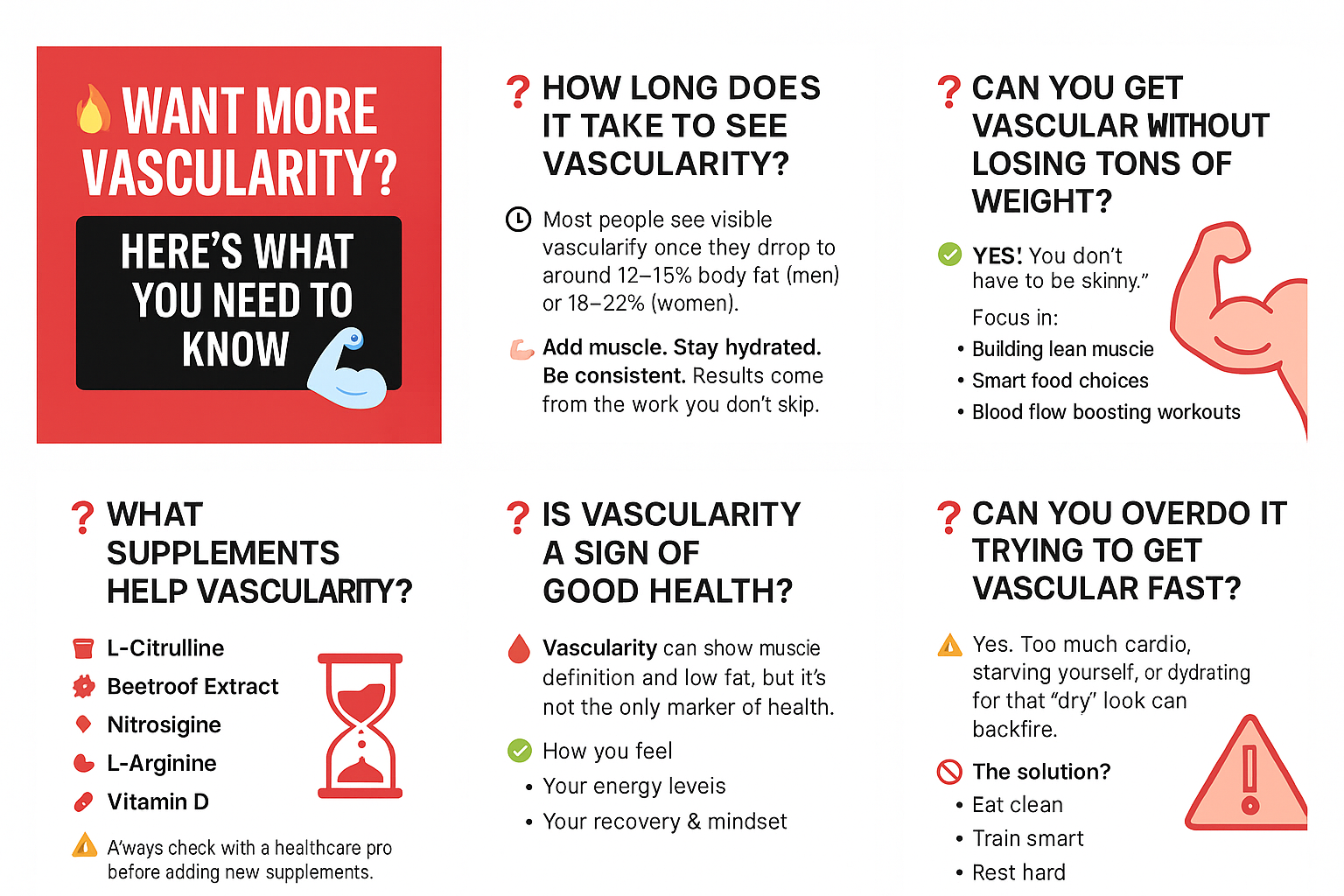
❓ 1. How long does it take to see vascularity improvements?
Answer:
It depends on your current body composition, workout routine, and nutrition. Most people start noticing visible vascularity once their body fat drops below 12-15% for men and 18-22% for women, combined with consistent strength training and proper hydration. For many, changes are noticeable within 4-8 weeks of focused effort.
🕒 Remember: Consistency is key. You’re building the foundation every day, even when it’s not yet visible.
❓ 2. Can you increase vascularity without losing a lot of weight?
Answer:
Yes! While lowering body fat is essential, you can improve vascularity by building muscle, increasing blood flow, and enhancing nitric oxide levels through specific foods and workouts. You don’t need to be “skinny” to look vascular, lean and muscular is the goal.
💪 Think strength, not scale.
❓ 3. What supplements actually help vascularity?
Answer:
Science-backed supplements that may enhance vascularity include:
-
✅ L-Citrulline
-
✅ Beetroot Extract
-
✅ L-Arginine
-
✅ Nitrosigine
-
✅ Vitamin D (for blood flow and testosterone support)
🧪 Always consult your doctor or a nutritionist before adding new supplements.
❓ 4. Is vascularity a sign of better fitness or health?
Answer:
Not always. While vascularity can reflect low body fat, good circulation, and muscle development, it’s not the only sign of health. Focus on how you feel, perform, and recover, vascularity is just a bonus from doing those things right.
🌟 It’s about progress, not perfection.
❓ 5. Are there risks to trying to get too vascular too fast?
Answer:
Yes. Extreme calorie deficits, dehydration, or overtraining can harm your body more than help it. Instead, aim for slow, sustainable fat loss, quality nutrition, and a recovery-first mindset.
⚠️ A lean body is earned through health, not shortcuts.
